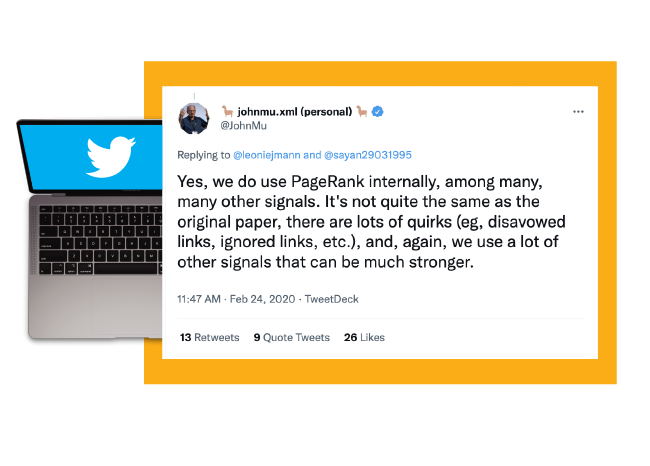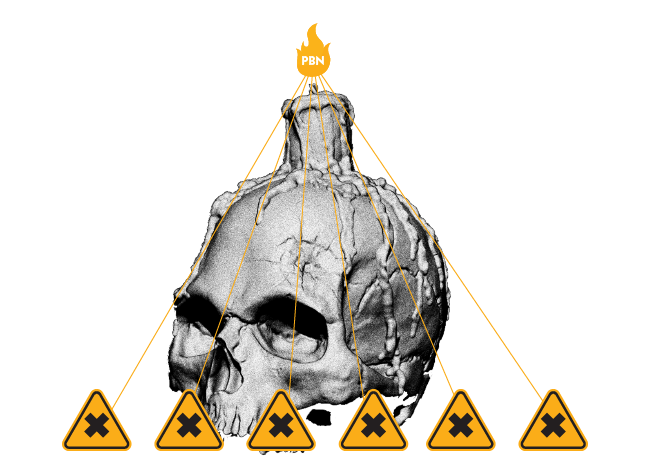 On a daily basis, website owners and businesses across the web let their domain names expire. Maybe a business went under and the site is no longer viable. Or maybe a website owner got too busy with other projects to remember to renew a recently expired domain.
On a daily basis, website owners and businesses across the web let their domain names expire. Maybe a business went under and the site is no longer viable. Or maybe a website owner got too busy with other projects to remember to renew a recently expired domain.
In any case, domains often retain their vital statistics, even after they expire, which can make them attractive to a variety of different types of businesses or individuals. However, there are a few serious considerations you want to make before taking the plunge into purchasing an expired domain.
 What Makes a Good Domain?
What Makes a Good Domain?
There are a few key factors that help to determine what a good domain is. Here’s a quick breakdown of them:
1) Domain History… Not Domain Age
Until recently, many of us out there might have believed that the longer a domain name has been around, the more likely it is to rank. John Mueller has since stated that Google does not take this into consideration.
What Google does look at is past penalties levelled at the site. If a domain was penalized while it was active, the penalty will carry over when the domain is reactivated. Before purchasing an expired domain, check a tool like SEMRush to view historical traffic data for the domain.
2) Domain Authority (DA)
Originally created by Moz as an unofficial scoring system for websites, Domain Authority was designed to indicate how well a website will rank on Google. The higher the score, the easier it will be for your website to rank in the top Google results. The two major deciding factors for a website’s domain authority are:
- The number of sites that link back to yours as a reference.
- The quality of sites that link back to yours as a reference.
Domain Authority is not a direct ranking factor for Google’s algorithm. It merely reflects a site’s chances of ranking at the top based on the quality of the backlinks.
It is also not necessarily accurate in determining the site's quality, because the DA score can be easily manipulated and inflated. But if you look at the quality of the backlinks, that will give a you pretty good idea of the domain’s overall quality.
3) PageRank (PR)
Named after Larry Page, PageRank is exactly what it sounds like. The algorithm determines the authority of each page on a website based on the number and quality of links to each one.
Essentially, the PR ranking looks for the same things as the DA ranking does — it just takes it on a page-by-page basis, as opposed to the website as a whole. Although many believe PageRank is no longer a part of Google’s algorithms, Google’s John Mueller confirmed that it still is.

4) Backlinks
Backlinks are hyperlinks from other sites that link back to your site. The higher the other sites’ quality is, the higher your domain authority could be, depending on the number of overall backlinks and their respective quality.
5) Number of Ranking Keywords
It’s important to have a website with keywords that rank well in search results. This is so that your site can be easily found when searchers are looking for answers to their questions.
 What Expired Domains Are Used For
What Expired Domains Are Used For
Expired domains are generally used for two main purposes: private blog networks (PBNs) and niche site creation.
PBN (Private Blog Network)
PBNs are websites that essentially establish artificial connections between each other for the purpose of using the “link juice” of domains with higher DA, in order to improve rankings for the members of the network.
Some people purchase high-quality domain names, adding them to their PBN to artificially boost their main website’s authority.
PBN link building is considered blackhat SEO. Any site that tries to game Google’s algorithm usually gets caught. Over the last seven years, there were more and more instances of these types of sites getting blown to smithereens.
Google has made it very clear that they’re cracking down on sites that use PBNs, so if you want the best results, writing useful content that naturally attracts backlinks is the smartest way to go.
Establishing a New Niche Website
The other way to utilize expired premium domains is to establish new websites around expired domain names that might already have some solid signals. A skilled publisher can revamp the site with great content and a new design, then work towards monetizing it.
A potential benefit of establishing a website on an expired domain is that if the domain is still indexed in Google, you won’t have to wait six months in the alleged “Google Sandbox” for your posts to rank.
Having said that, it’s always good to remember that while an expired domain might be a great upfront investment, your success is a marathon, not a sprint. You might see quick growth initially, but creating a new site that achieves a consistent level of traffic and revenue will require just as much time and effort down the road as building a website on a brand-new domain would. 
Tips for Building a Great Niche Site on an Expired Domain
Expired domains are never a guaranteed win. Even if you find one with exceptional links, that’s only part of the equation. You’ll still need to create winning content, build quality backlinks, and adhere to a comprehensive, growth-oriented content strategy.
Here’s how to work on revitalizing an expired domain.
1) Create Useful Content Based on What Was There Before
You should always take a look at what the site consisted of while the domain was active. You can use a free tool like the Wayback Machine for this purpose.
If you’re giving the users the information they’re looking for, your content can be pretty much any length you want.
Before writing an article, do some research and figure out which articles are already ranking the highest on Google. By finding the posts that have proven to be the most successful on social media and the most successful at attracting backlinks, you can figure out the formula for success and incorporate it into your own content strategy.
2) Use a WordPress Plugin to Redirect All 404 Links to the Homepage
With expired domains, there are likely to be backlinks pointing to pages that are either no longer there or to pages you can’t create content for. If you’re rebuilding an expired domain on a WordPress site, there are many plugins that can automatically redirect those backlinks to your new site’s homepage.
3) Update Old Content on the Site as Needed
Updating old content is one of the biggest things website owners overlook. This goes double when it comes to expired domains. Unless everything on the old domain was evergreen content, chances are that the content will need an overhaul to keep it fresh and relevant in the eyes of Google.
 Should You Use a New Domain or an Expired Domain?
Should You Use a New Domain or an Expired Domain?
Whether or not you should consider an expired domain will depend largely on what your goals are. If your plan is to create a business with a unique name and brand, the best way to do this is by creating a new site and building it from the ground up. This takes time, dedication, and hard work. As many of us familiar with the world of SEO know, there is no shortcut to that.
If you’re looking to build a content site in a new niche, you might consider going for a used domain. However, whether it's a new domain or an expired domain, there’s no getting around the work needed to implement and integrate a successful and holistic SEO strategy.

